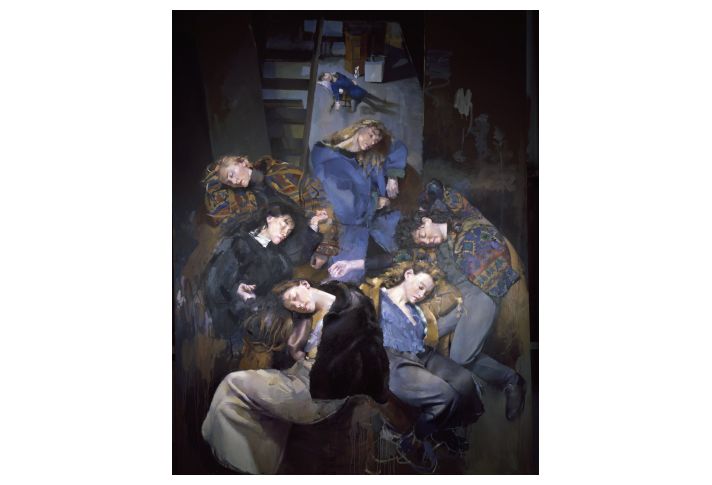According to Christian tradition, the ‘Seven Sleepers’ were six Christian youths, all male, and a trusty dog, who tried to escape persecution by the Romans in 250AD by hiding in a cave near Ephesus (in modern day Turkey) but were then entombed within. They allegedly fell asleep and, according to the mythology of the Middle Ages, awoke some 360 years later to find the world transformed and Christianity in the ascendant, but were unable to prove their identities.
However, the arrangement of the sleepers in a circle probably refers to the ancient Jewish story of Choni HaMa’agel, or Choni the Circle-Drawer, a rainmaker who allegedly drew a circle in the dust during a particularly severe drought and informed God he would remain inside it until it rained. In another tale he is said to have fallen asleep concealed under a rock for 70 years, eventually to awaken and find that no one believes he is who he claims to be. Similar to the nineteenth century tale of Rip van Winkle, these stories present a select group or person who escape misfortune in their own times at the cost of being out of place in the world to which they have awakened.
In Greek mythology, Hypnos was the personification of Sleep and was brother to Thanatos, Death – we are familiar with expressions for deep sleep as being ‘dead to the world’. So although the Seven Sleepers would eventually be resurrected, they were viewed by their contemporaries as martyrs who had ‘died’ for their faith. Lenkiewicz had explored the themes of lovers ‘sacrificing’ or ‘martyring’ themselves in the relationship in his earlier Projects Death & the Maiden (1974) and Love and Romance (1975).









